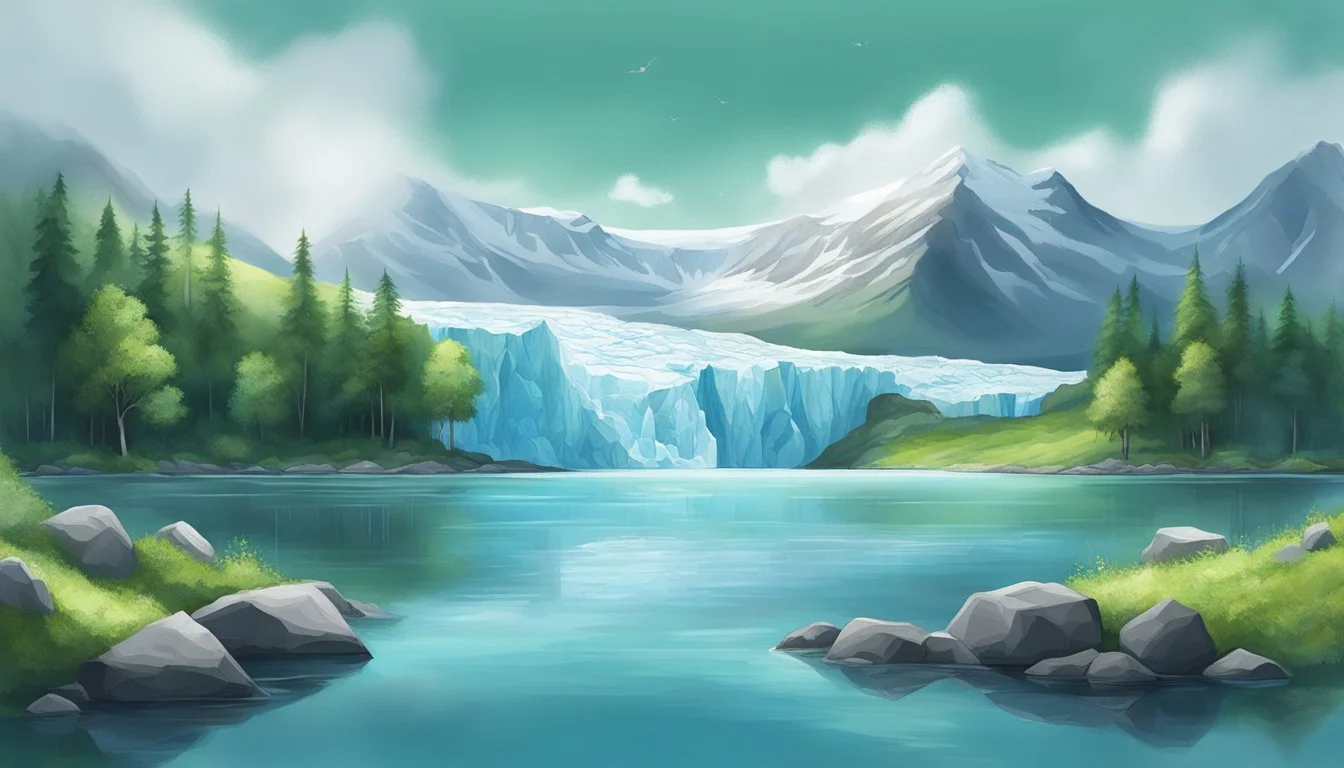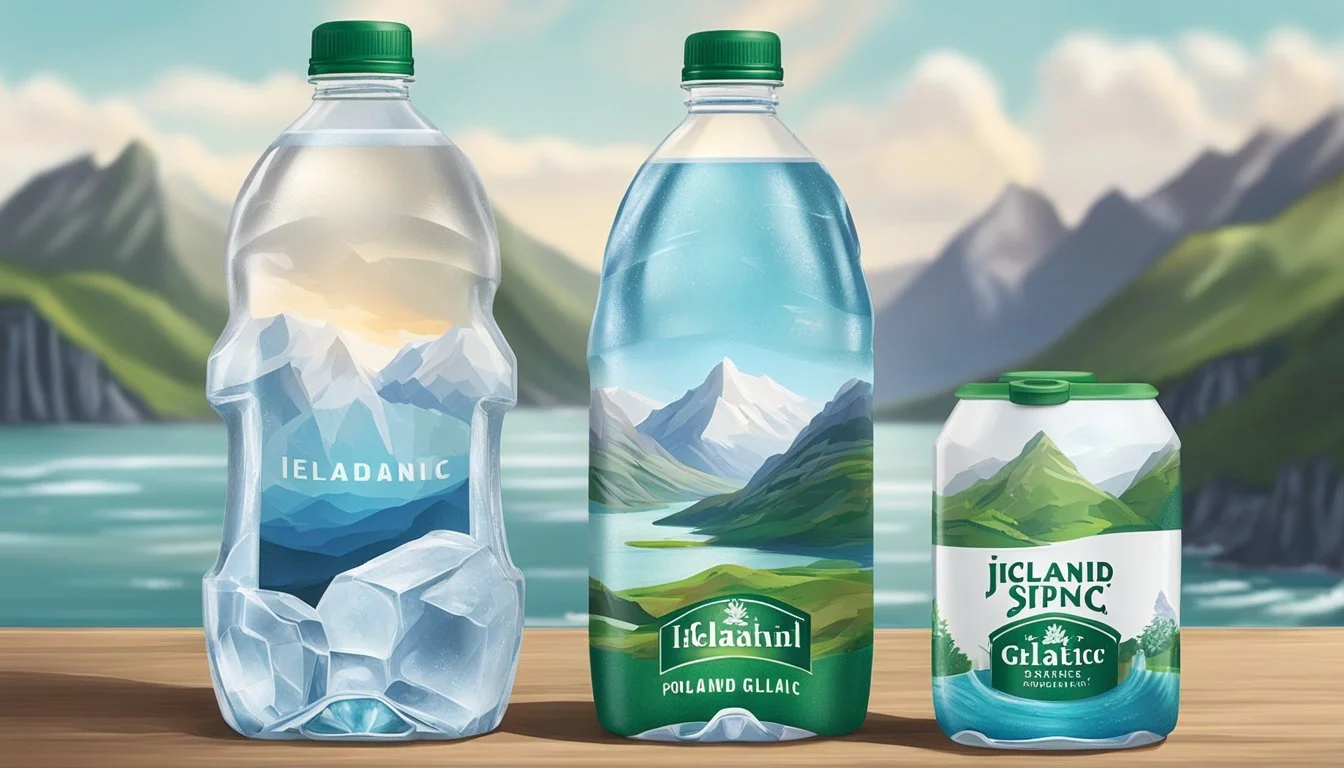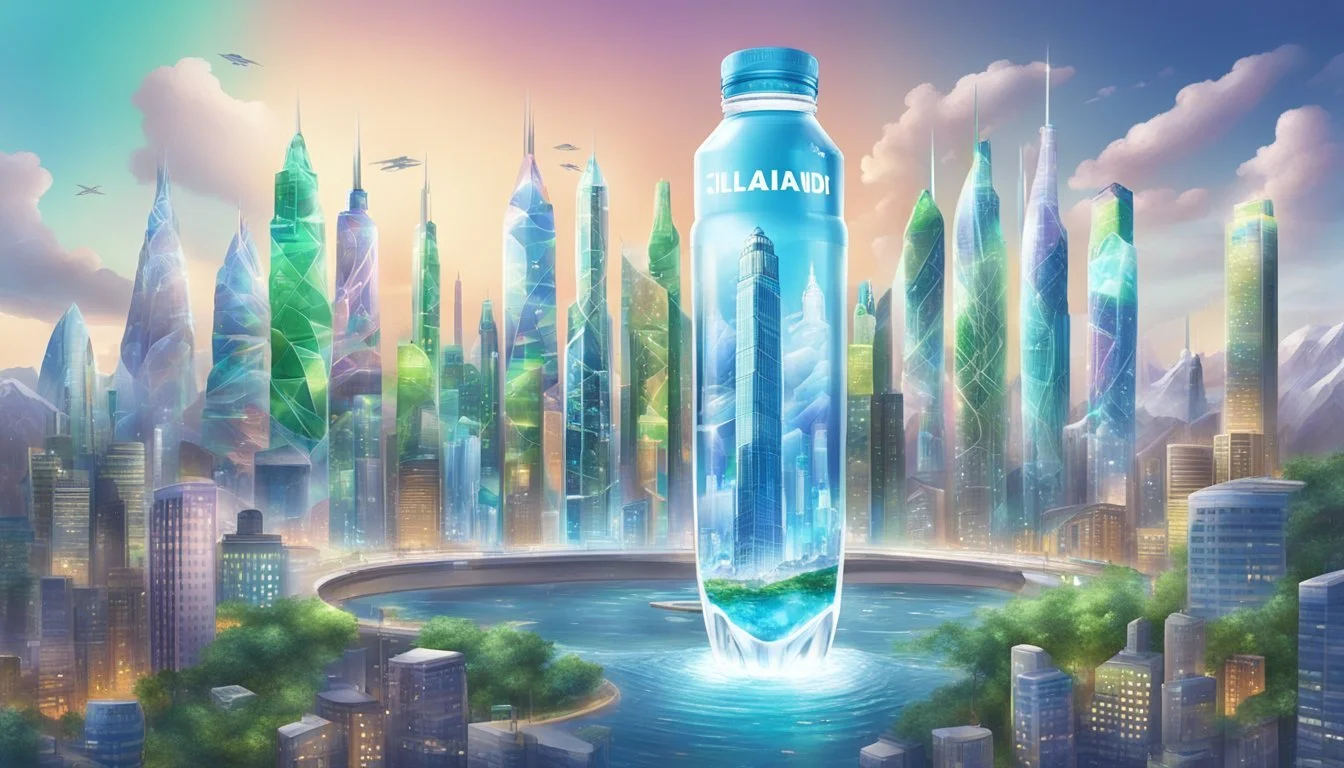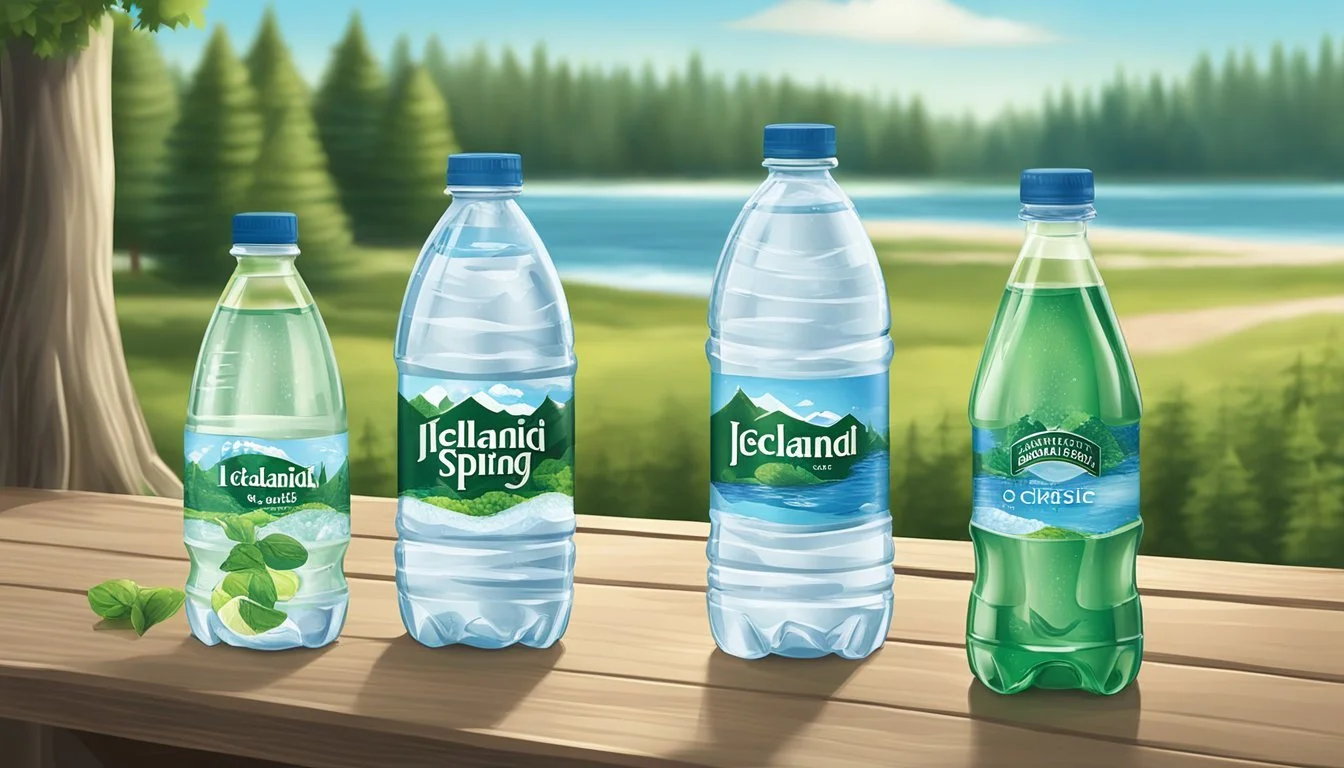Icelandic Glacial vs. Poland Spring
Comparing Quality and Taste
Choosing the right bottled water can be a matter of personal taste, health considerations, and environmental impact. Among the numerous brands on the market, Icelandic Glacial and Poland Spring stand out for differing reasons. Icelandic Glacial boasts of being sourced from the legendary Ölfus Spring, one of the world's purest ecosystems, while Poland Spring originates from multiple springs in Maine, promising natural filtration and a refreshing taste. These brands' reputations position them as leading choices for hydration, but they cater to distinct consumer preferences based on their unique sources and brand promises.
Icelandic Glacial takes pride in its commitment to sustainability and maintaining an untouched product, marketing itself as providing the cleanest water possible. This is further bolstered by a high number of positive reviews which indicate a loyal consumer base. Poland Spring, on the other hand, provides a different narrative, focusing on the long-established tradition and regional heritage of northeastern United States, which it claims gives its water a distinctive quality. While both brands are popular, the question of superiority depends on one's priorities, be it the ecological footprint of the product or the specific mineral content that influences the water's taste.
Overview of Bottled Water Industry
The bottled water industry has seen significant growth over recent years, transitioning from a convenience commodity to a primary source of hydration for many. Within this broad industry, a variety of water types and brands strive to meet consumer demands for both quality and taste.
Evolution of Bottled Water
Initially, bottled water was a product of luxury, often associated with health benefits and a higher social status. Its evolution can be traced back to ancient times where water from specific natural springs was considered to have curative properties. Today, it has become a ubiquitous everyday item with a complex supply chain ranging from extraction to distribution. Spring water, such as Mountain Valley Spring Water and Poland Spring, is one popular category that promises a natural filtration process, while mineral water, including brands like Perrier and San Pellegrino, is valued for its natural minerals and carbonation. The advent of enhanced waters, such as alkaline water offered by Essentia or vitamin-infused Smartwater, reflects the industry's innovation to serve niche markets.
Prominent Brands in the Market
The bottled water market boasts an assortment of brands, each with its unique selling propositions. Nestlé Pure Life and Aquafina, owned by Nestlé and Coca-Cola respectively, are mass-market brands known for their purified drinking water. In contrast, Icelandic Glacial sets itself apart by offering naturally alkaline water with a low mineral content and a commitment to sustainability. Notably, Icelandic Glacial was the world's first bottled water to receive CarbonNeutral product and operation certifications. Brands like Fiji Water and Voss have positioned themselves as premium offerings, emphasizing their exotic source locations and marketing their distinct taste profiles. With health consciousness on the rise, more consumers are favoring these premium waters, along with options like CORE Hydration, Acqua Panna, and Eternal Water, each bringing different attributes such as balanced pH levels or unique mineral contents to the table.
Comparative Analysis of Icelandic Glacial and Poland Spring
Icelandic Glacial and Poland Spring are two prominent bottled water brands, each with unique sources and qualities that cater to varying consumer preferences. This section examines both brands to provide insight into their natural characteristics, purification processes, pH levels, environmental impact, packaging options, and flavor profiles.
Source and Natural Characteristics
Icelandic Glacial water originates from the Ölfus Spring in Iceland, renowned for its high-quality and naturally filtered groundwater. The Ölfus Spring is replenished by rain and snow melt filtering through layers of volcanic rock. Poland Spring sources its water from multiple springs in Maine, with the most famous being the original Poland Spring in Poland, Maine. Both sources are naturally occurring springs but differ in their geological landscapes.
Purification Processes and Quality
While both brands undergo processes to ensure purity and quality, they employ distinct methods. Icelandic Glacial boasts the use of a sustainable process that utilizes the Ölfus Spring System, called the Hydro-7 method, which filters the water without demineralizing, retaining essential minerals. Poland Spring, extracted from various springs, goes through a 10-step quality process that includes filtering for impurities and contaminants, ensuring it meets or exceeds EPA standards.
pH Levels and Mineral Content
The pH levels and mineral content are essential for health and taste. Icelandic Glacial markets its water as alkaline, with pH levels generally over 8. Poland Spring's pH levels can vary, but they typically hover around neutral. Icelandic Glacial’s water has a low Total Dissolved Solids (TDS) content, which contributes to its claim of exceptional purity. In comparison, Poland Spring also maintains a low TDS level, resonating well with consumers looking for a clean taste.
Environmental Impact and Sustainability Practices
Icelandic Glacial is recognized for its commitment to being carbon neutral and for its use of fully recyclable packaging. Poland Spring has made efforts to reduce waste by utilizing recycled materials in its bottles and has a commitment to moving towards more sustainable practices. Both brands are working on initiatives aimed at reducing their environmental footprint.
Packaging Options
Icelandic Glacial offers its water in distinctive, BPA-free bottles and has options for glass bottle packaging for consumers seeking a premium experience or looking to avoid plastic. Poland Spring provides a variety of packaging choices, including recyclable plastic and boxed water options, appealing to convenience and eco-friendliness.
Flavor Profiles and Consumer Preferences
Taste is subjective, yet both waters are often described as clean and refreshing. Icelandic Glacial is known for a crisp taste without a plastic or metallic undertone, attributed to its pure source and minimal processing. Poland Spring has a reputation for a balanced flavor with no overwhelming mineral taste, making it comparable to fresh tap water in terms of palatability. Preference between these two may come down to the subtle differences in mineral content and the taste profile each individual enjoys.
Health Implications of Bottled Water
Choosing the right bottled water is essential as it impacts hydration and overall health. Safety standards and water quality vary among brands, making it imperative to understand these aspects when comparing Icelandic Glacial and Poland Spring, or any other bottled waters.
Hydration and Body Health
Hydration is crucial for maintaining body health, and both Icelandic Glacial and Poland Spring offer spring water, which is typically marketed as a natural hydration choice. Spring waters should contain natural minerals and have an appropriate pH level, which is key for avoiding too much acidity in the diet. However, total dissolved solids (TDS), a measure of the combined content of all inorganic and organic substances, can vary and may influence the taste and the body's response to the water.
Comparing Bottled Water to Tap Water
When comparing bottled water like Icelandic Glacial and Poland Spring to tap water, two main factors stand out: taste and contaminants. Bottled waters often claim a purity and mineral content that can make them more appealing than tap water. However, tap water is regulated by the Environmental Protection Agency (EPA) and must meet strict water quality standards. Tap water also typically contains added fluoride, which can benefit dental health.
Type of Water:
Spring Water: Sourced from natural springs, may contain natural minerals.
Tap Water: Often treated with fluoride, regulated by EPA standards.
Bottled Water Safety Standards
Safety is paramount when discussing bottled water. Consumers often believe bottled water to be the safer alternative, but it must adhere to strict standards to be considered the best bottled water option. According to Consumer Reports, some brands may contain PFAS chemicals, which can be harmful over long exposure times. It's important that bottled water undergo rigorous testing to ensure it's free from contaminants and meets or exceeds quality standards. When assessing brands like Icelandic Glacial and Poland Spring, checking for certifications and quality reports can inform about the water's safety.
Safety Factors:
Contaminants: Bottled water should be tested for harmful substances.
Certifications: Look for quality assurances and safety certifications.
Testing: Frequent and thorough testing ensures safety and quality.
Whether one chooses bottled water or tap, scrutinizing the water's source, the presence of contaminants, and adherence to safety standards is critical for health.
Consumer Considerations for Purchasing Bottled Water
When choosing bottled water, consumers weigh taste, cost-effectiveness, and the ease of obtaining their preferred brand. These factors guide purchases and brand loyalty.
Taste and Personal Preference
The taste profile of bottled water can vary significantly between brands. Icelandic Glacial boasts a pH of 8.4 and a low mineral content, which contributes to its neutral taste with a notably smooth mouthfeel. Conversely, Poland Spring, sourced from multiple springs in Maine, may have a slightly different taste due to its unique mineral composition. Water taste is subjective, and individuals may prefer the rich and refreshing profile of Icelandic Glacial or the classic, well-balanced flavor of Poland Spring.
Price and Value for Money
Price plays a crucial role in the consumer's decision-making process. Icelandic Glacial is often positioned as a premium water brand, which may reflect in its price point. On the other hand, Poland Spring is generally considered more affordable and readily available, which may offer better value for money for consumers seeking quality without a premium price tag.
Icelandic Glacial: Potentially higher-priced with emphasis on purity and sustainable packaging.
Poland Spring: Typically more budget-friendly, favored by consumers for its cost-effectiveness.
Convenience and Accessibility
Convenience and accessibility can influence brand preference as well. Icelandic Glacial's availability may be more limited compared to Poland Spring, which is widespread in the United States, especially in the northeast. While Icelandic Glacial emphasizes environmentally friendly packaging and rPET materials, the ease of locating Poland Spring in a variety of retail settings could make it a more convenient option for many shoppers.
Icelandic Glacial: May be less accessible in some markets; eco-conscious packaging.
Poland Spring: Widely available; ubiquity can be a decisive factor for consumers.
The Future of Bottled Water
As the bottled water market evolves, the focus on sustainability, consumer health consciousness, and stringent regulations is sharper than ever. Industry players are adapting through advanced water treatment processes, eco-friendly packaging, and compliance with regulatory standards.
Innovation and Market Trends
The bottled water industry is witnessing the rise of advanced treatments such as ionization. This process enhances pH levels, resulting in offerings like ionized water. A new entrant, Hyper-7, has innovated by using proprietary filtration technology to deliver mineral-rich water. Companies like BluTriton are making strides in naturally sourced water and gaining popularity for sources like Colorado, known for pristine natural springs.
Regulatory Changes and Consumer Awareness
Regulations are becoming stringent to ensure safety and minimize environmental impact. For instance, recyclable materials in packaging are being emphasized to reduce waste. Consumer awareness campaigns are educating the public about the differences in water sources and manufacturing processes, impacting brands like Nestlé Pure Life, which faces scrutiny over sourcing practices.
Sustainability Initiatives
The push for carbon neutral operations is significant. Some brands are pioneering in this realm, like Icelandic Glacial, recognized as the world's first bottled water brand to achieve CarbonNeutral certification. Their use of 100% recyclable rPET bottles highlights the industry's shift towards mitigating environmental impact and aligning with consumer expectation to reduce waste.
Conclusion
When contrasting Icelandic Glacial and Poland Spring, consumers face a choice between two distinct bottled water profiles. Icelandic Glacial boasts a naturally alkaline pH of 8.4 and low mineral content, conducive to those who prefer a neutral taste without a plastic aftertaste. It sources from the Ölfus Spring, which is replenished by Iceland's natural filtration through lava rock.
On the other hand, Poland Spring originates from multiple springs in Maine and has a longstanding reputation on the East Coast. Its taste profile may vary slightly based on the source spring, but generally, it provides a consistent, clean taste that consumers trust.
Environmental Considerations:
Icelandic Glacial: emphasizes eco-friendly practices
Poland Spring: has faced challenges regarding its environmental impact
Taste and Purity:
Icelandic Glacial: neutral taste, high purity
Poland Spring: familiar taste, reliable quality
For those prioritizing sustainability, Icelandic Glacial might edge out Poland Spring due to its carbon-neutral certification and commitment to utilizing renewable energy. If regional loyalty and cost are primary concerns, Poland Spring could be the preferred choice, especially for consumers in the Northeastern United States.
It should be noted that personal preference plays a significant role in the decision-making process. One's choice may be influenced by taste preference, environmental values, price sensitivity, and brand loyalty. Both brands offer quality and confidence in their products, leaving the final decision to individual priorities and taste.





